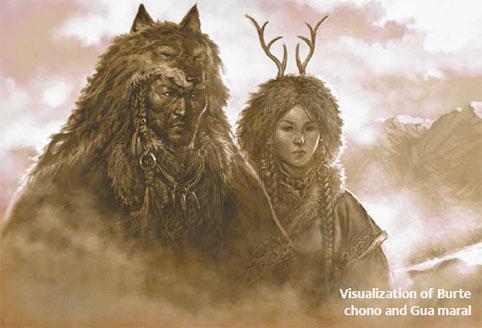(+976) 11-354662
| info@tourmongolia.com | sales@tourmongolia.com
Mongolia is home to one of the world’s last surviving nomadic cultures, and these nomads still live in traditional ways. Up to 40 percent of Mongolians live as nomadic herders. They mostly live tens of miles away from the nearby communities, villages and towns and live in harsh conditions taking care of their livestock with limited electricity power.
Travelers are given the opportunity to spend time with Mongolian nomads, take a rest in Mongolian gers and learn first-hand about the traditional Mongol daily life.
Mongolia is said to be derived from the word Mongol, which is said to be from the word mong, meaning “brave.”
Mongolians have a simple nomadic lifestyle enriched by the philosophy of living in harmony with the natural environment. Each and every symbolic act of nomads – be it a greeting, paying respect, telling a legend or singing an epic, – inevitably has deep symbolism and meaning.

The historical roots of Mongolians are best explained in the 1204 AD
The Secret History of Mongols: “The ancestors of Chinggis Khaan – Burte Chono (meaning grey wolf) and his wife Gua Maral (meaning a beautiful deer), came sailing across the ocean and settled in Mount Burkhan Khaldun, at the spring of the Onon river, and gave birth to a boy named Battsagaan. Thousands of years later, the existence of Mongolian nomads is as complicated to understand as the myths surrounding their origin.
There are many stories of tourists being overwhelmed by the unreserved and open-hearted hospitality of the people who are best known for once dominating half of the world. However, if you look deeper into their spirit, you will witness how strong, stern nomadic men can be moved to tears when his racing horse about to finish in first place. How they sing and play music for a mother camel that has rejected her calf until she accepts it once more. How women sing to their domestic animals to calm them while milking them.
It is astounding how the tough, rustic Mongolian nomads – who survive such harsh climates – show their tender care towards animals, plants, and each other.
Have you heard of any other people who have designed their boots with soft, wide, curved soles to avoid hurting seedlings?
These are secrets hidden deep inside the simplicity of their lives. Mongolian nomads have a long tradition of soothing and comforting female animals that have rejected their newborns. To make a female sheep accept its own lamb or an orphan lamb a ritual called “toig” is practiced, a “chuugii” for goats, and a “khuuslukh” for camels. These rituals involve a form of singing technique used to calm the livestock.
For example “khuuslukh” is a ritual singing “khuus, khuus, khuus” to pacify the camel and stir the inner soul of the camel. A vivid example is beautifully portrayed in the documentary “The Story of the Weeping Camel.” These rituals are nomadic intangible heritages passed down from generation to generation and practiced even today.
When travelling across Mongolia, you will quickly learn the locals have a tale to tell about the surrounding mountains, rivers, valleys and more. Why?
For Mongolians, myths and stories handed down from their ancestors to help them make sense of the world. All Mongolian legends have historical accounts and wisdom about living harmoniously with nature. For this reason, Mongolians value their myths and pass them down from generation to generation. It’s amazing to discover how this culture dedicate a tale to even the smallest of rocks has merged with their everyday lifestyle. In a sense, the essence of their lifestyle is mythology itself.
The epic mindset of nomads was reconsidered with the discovery of a 1500 year old angular Altai harp inside the tomb of a warrior. Mongolian epics are songs that are considered to be the living encyclopedia of the country. Singers perform songs that are hundreds to thousands of lines long while playing an instrument. It is inspiring to imagine, 1500 years ago, a man dropping his weapon and singing about peace while playing a harp he crafted with his own hands. The ancient drawings and runic inscriptions carved on the harp make it even more impressive.
Some short epics can be sung within a night, while others are sung over many nights. Mongolian epics are listed on UNESCO’s Intangible Cultural Heritage List for their spirit of original religious beliefs and expression of the mythological thinking and literature of nomads. It is estimated that no more than 20 epic singers are alive today.
Nomads have a musical mindset and their melodies are an intrinsic part of their lifestyle. Nomads have developed various ways of calling, whistling, whooping, and practicing rituals such as “chuugii,” “khuus” and “toig” to communicate with their herds.
However, the most prestigious forms of nomad music are “khuumii,” throat singing, and “urtiin duu,” long songs. Khuumii and long songs can help you understand the uniqueness of Mongolians as well as their understanding of the world. As they mimic their surroundings, you can hear the mountains, wind and water, the sounds of birds and other animals, the unity of man and nature, and the echoes of inner souls.
Accompanied by melodies played on a horse-headed fiddle, Mongolian long songs will make you feel the timeless freedom and the serene composition of harmony between man and nature. It is not a surprise that any concert hall is too small to fully appreciate khuumii and long songs.
Our tours focus on interactive communications, experiences sharing with Mongolian people, especially nomadic herder communities since one of the primary purposes of our guests are to understand local way of life, culture and beliefs and exchange knowledge in non-touristic way.